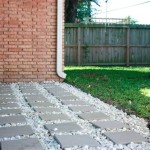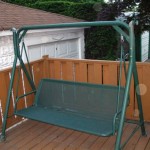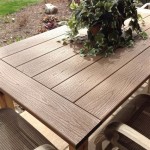Pea Gravel Cement Patio Pavers: A Comprehensive Guide
Pea gravel cement patio pavers represent a versatile and cost-effective option for creating attractive and functional outdoor spaces. These pavers combine the aesthetic appeal of pea gravel with the structural integrity of concrete, offering a durable and visually pleasing surface for patios, walkways, and other landscape features. This article explores the composition, benefits, installation considerations, maintenance requirements, and design possibilities associated with pea gravel cement patio pavers.
Composition and Manufacturing
Pea gravel cement patio pavers are manufactured by integrating pea gravel aggregate into a cement matrix. The pea gravel, typically rounded and smooth, consists of small, naturally occurring stones of various colors and sizes. These stones are mixed with cement, sand (optional), and water to create a concrete mixture. The mixture is then poured into molds of various shapes and sizes, compacted to remove air pockets and ensure density, and allowed to cure. The curing process allows the cement to hydrate and harden, binding the pea gravel together to form a solid paver.
The specific proportions of pea gravel to cement will vary depending on the desired aesthetic and structural properties. A higher proportion of pea gravel will result in a more textured, natural-looking surface, while a higher proportion of cement will increase the paver's strength and durability. Manufacturers often use pigments to alter the color of the cement matrix, allowing for a wider range of design options. Some pavers may also be treated with sealants to enhance their resistance to staining and weathering.
The quality of the materials used in the manufacturing process is critical to the performance of the paver. High-quality cement, clean pea gravel, and proper curing techniques contribute to a durable and long-lasting product. Inferior materials or improper manufacturing processes can result in pavers that are prone to cracking, crumbling, or discoloration.
Advantages of Pea Gravel Cement Patio Pavers
Pea gravel cement patio pavers offer several advantages over other paving materials, making them a popular choice for homeowners and contractors. These advantages include:
*Aesthetics:
The exposed pea gravel creates a natural, textured aesthetic that blends well with various landscape styles. The rounded stones provide a visually appealing surface that is more organic and less formal than traditional concrete pavers. The availability of different pea gravel colors and cement pigments allows for customization to match the surrounding environment. *Cost-Effectiveness:
Pea gravel cement pavers are generally more affordable than natural stone pavers or other high-end paving materials. The relatively simple manufacturing process and readily available materials contribute to their lower cost. This makes them a budget-friendly option for homeowners looking to enhance their outdoor spaces. *Durability:
When properly manufactured and installed, pea gravel cement pavers are durable and can withstand heavy foot traffic and moderate vehicle traffic. The concrete matrix provides structural support, while the pea gravel adds impact resistance. They are less prone to cracking or chipping than poured concrete surfaces. *Permeability:
While not fully permeable, pea gravel cement pavers offer some degree of permeability due to the spaces between the stones. This can help to reduce stormwater runoff and allow for natural drainage. The level of permeability will depend on the size and density of the pea gravel, as well as the joint spacing between the pavers. *Ease of Installation:
Pea gravel cement pavers are relatively easy to install, requiring no specialized tools or equipment. They can be laid on a compacted base of gravel or sand, and the joints can be filled with sand or polymeric sand. This makes them a suitable option for DIY projects. *Low Maintenance:
Pea gravel cement pavers require minimal maintenance. Regular sweeping or rinsing with water is usually sufficient to keep them clean. Occasional sealing can help to protect them from staining and weathering.Installation Considerations for Optimal Performance
Successful installation is crucial for ensuring the long-term performance and aesthetic appeal of pea gravel cement patio pavers. Careful planning and attention to detail are essential to avoid common problems such as settling, cracking, or weed growth. The following considerations should be taken into account during the installation process:
*Site Preparation:
Proper site preparation is paramount. This involves excavating the area to the appropriate depth, removing any existing vegetation or debris, and compacting the subgrade. A stable and level subgrade is essential for preventing settling and ensuring that the pavers remain even. The depth of excavation will depend on the soil type and the anticipated traffic load. *Base Layer:
A base layer of compacted gravel or crushed stone is necessary to provide drainage and support for the pavers. The thickness of the base layer will depend on the soil conditions and the expected traffic load. A geotextile fabric can be placed between the subgrade and the base layer to prevent the migration of soil and to improve drainage. *Sand Setting Bed:
A thin layer of sand (typically 1-2 inches) is spread over the base layer to create a level setting bed for the pavers. The sand should be clean and free of organic matter. It is important to screed the sand to ensure a uniform thickness and a level surface. *Paver Placement:
The pavers should be placed tightly together, leaving minimal gaps between them. A rubber mallet can be used to tap the pavers into place and ensure that they are level with each other. It is important to maintain consistent joint spacing to create a visually appealing and structurally sound surface. *Joint Filling:
Once the pavers are in place, the joints should be filled with sand or polymeric sand. Polymeric sand is a mixture of sand and polymers that hardens when wetted, creating a more durable and weed-resistant joint. The sand should be swept into the joints and compacted using a plate compactor or a hand tamper. *Edging:
Edging restraints are essential for preventing lateral movement of the pavers and maintaining the integrity of the paved surface. Edging can be made from various materials, such as plastic, metal, or concrete. The edging should be securely anchored to the ground to prevent it from shifting. *Drainage:
Adequate drainage is crucial for preventing water from pooling on the paved surface and causing damage. The patio should be sloped slightly to allow water to drain away from buildings and other structures. Drainage channels or catch basins may be necessary in areas with poor drainage.Maintenance and Care
Pea gravel cement patio pavers are relatively low maintenance, but some basic care is necessary to keep them looking their best and to prolong their lifespan. Regular maintenance includes:
*Cleaning:
The pavers should be swept or rinsed with water regularly to remove dirt, debris, and leaves. A mild detergent can be used to clean stubborn stains. A pressure washer can be used for more thorough cleaning, but care should be taken to avoid damaging the pavers or dislodging the joint sand. The nozzle should be set to a wide fan pattern and the pressure should be kept low. *Weed Control:
Weeds can grow in the joints between the pavers. These weeds should be removed regularly to prevent them from spreading and damaging the paved surface. Herbicides can be used to kill weeds, but care should be taken to avoid damaging the pavers or the surrounding vegetation. *Joint Sand Replacement:
The joint sand may need to be replaced periodically, especially if it has been eroded by water or wind. The joints should be filled with new sand or polymeric sand, and the surface should be compacted to ensure that the sand is tightly packed. *Sealing:
Sealing the pavers can help to protect them from staining, weathering, and fading. A sealant should be applied according to the manufacturer's instructions. The surface should be clean and dry before applying the sealant. *Repair:
Damaged pavers should be repaired or replaced as soon as possible to prevent further damage and to maintain the aesthetic appearance of the paved surface. Cracked or chipped pavers can be repaired with concrete patching compounds. Severely damaged pavers should be replaced with new ones.Design Possibilities and Applications
Pea gravel cement patio pavers offer a wide range of design possibilities, making them suitable for various applications. They can be used to create:
*Patios:
Pea gravel cement pavers are a popular choice for patios, providing a durable and attractive surface for outdoor living and entertaining. They can be arranged in various patterns and designs to create a unique and personalized patio space. *Walkways:
Pea gravel cement pavers can be used to create walkways and pathways through gardens and other outdoor areas. They provide a stable and comfortable surface for walking and can enhance the aesthetic appeal of the landscape. *Driveways:
Pea gravel cement pavers can be used for driveways, providing a durable and visually appealing alternative to asphalt or concrete. They can withstand heavy traffic and are less prone to cracking than poured concrete surfaces. However, ensure that the pavers are specifically rated for driveway use. *Pool Decks:
Pea gravel cement pavers are a suitable option for pool decks, providing a slip-resistant and aesthetically pleasing surface. They can withstand exposure to water and chemicals and are less likely to get hot in the sun than other paving materials. *Garden Paths:
These pavers blend nicely in a garden environment and can be used to create a natural-looking path. *Courtyards:
Courtyards surrounded by homes or buildings can be enhanced with pea gravel cement pavers that allow for a comfortable and inviting outdoor space.The versatility of pea gravel cement patio pavers makes them a valuable addition to any landscape design. By carefully considering the composition, installation, maintenance, and design possibilities, homeowners and contractors can create beautiful and functional outdoor spaces that will last for years to come.

How To Diy A Concrete Paver Pea Gravel Patio The Collected House

Diy Pea Gravel Patio With Pavers Love Renovations

How To Diy A Concrete Paver Pea Gravel Patio The Collected House

How To Make A Modern Patio With Pavers Pea Gravel The Savvy Heart Interior Design Décor And Diy

Diy Pea Gravel Patio With Pavers Love Renovations

Diy Pea Gravel Patio With Pavers Love Renovations

Pea Gravel

Diy Pea Gravel Patio Lowe S

How To Diy A Concrete Paver Pea Gravel Patio The Collected House

Concrete Pavers And Pea Gravel








